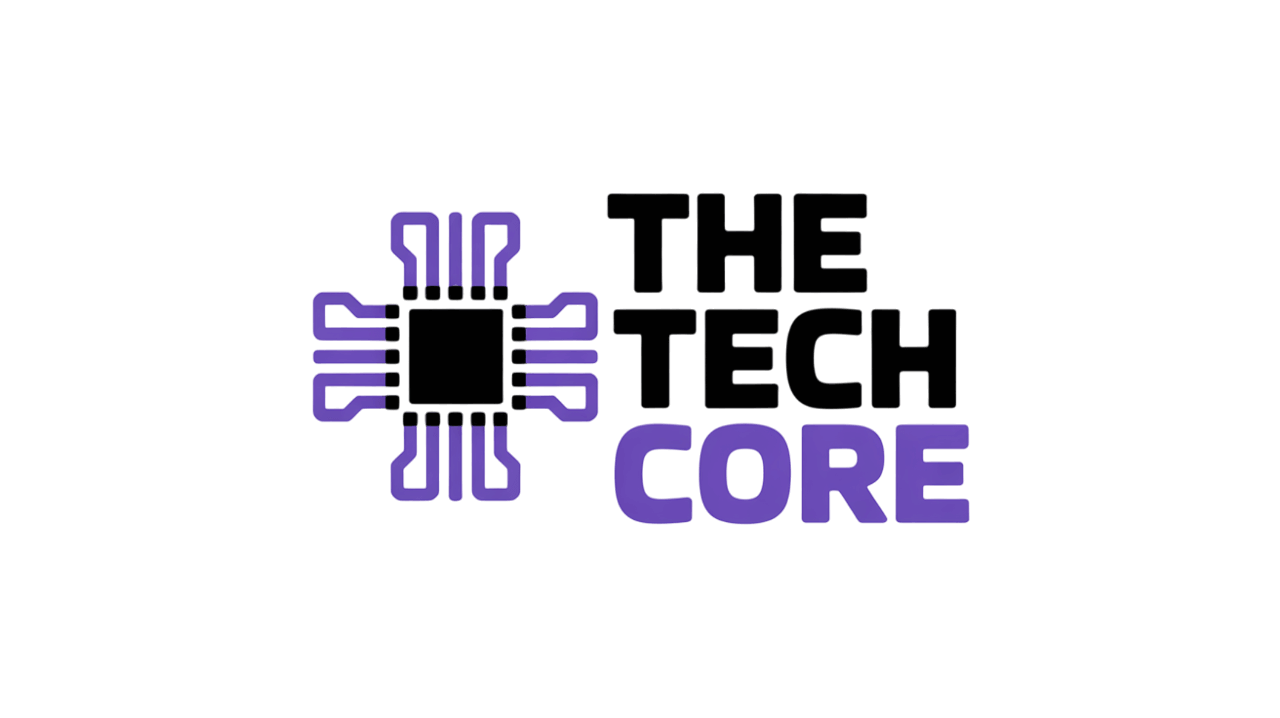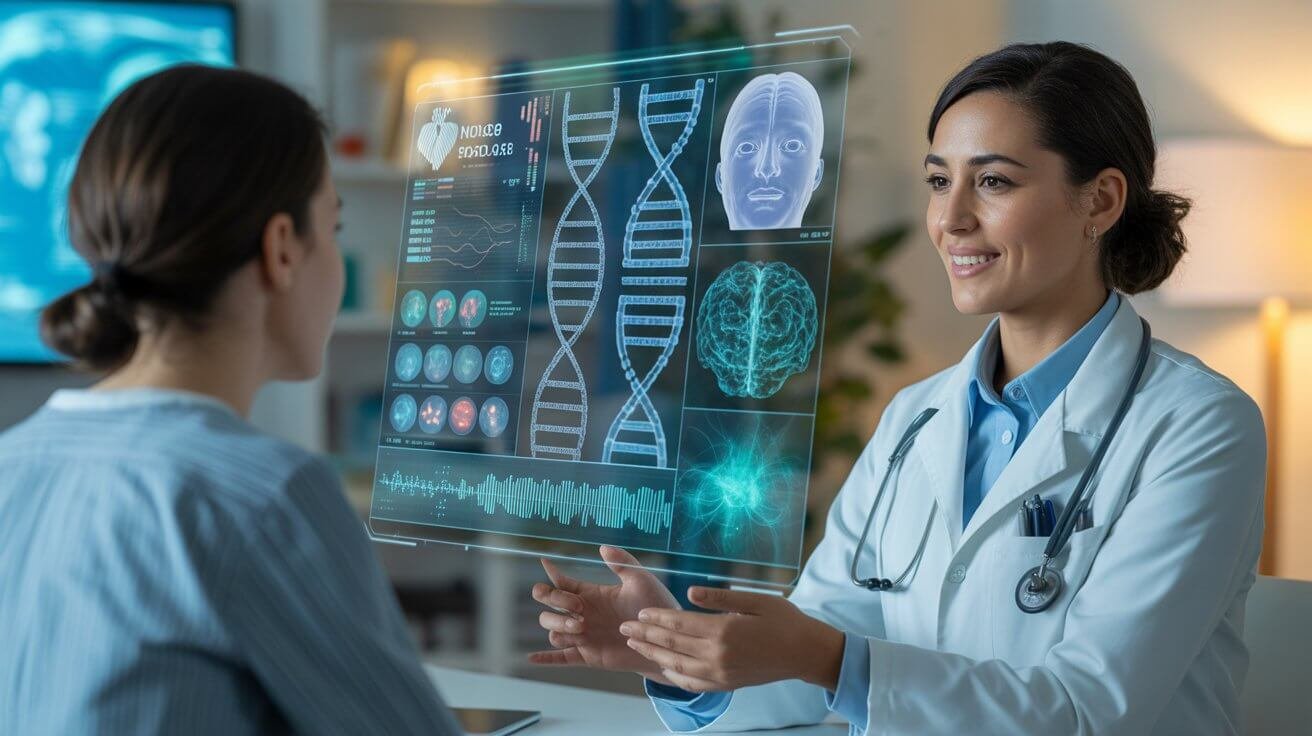AI-powered personalized medicine is moving beyond the hype, with proven successes like Microsoft’s diagnostic system achieving 85% accuracy on complex cases and the global personalized medicine market projected to reach $869.9 billion by 2030. However, real challenges around data privacy, algorithm bias, and clinical integration remain significant barriers to widespread adoption.
Introduction
Traditional medicine often follows a one-size-fits-all approach—the same drug, same dose, same treatment protocol for everyone with similar symptoms. But what if your unique genetic makeup, lifestyle, and medical history could guide every healthcare decision you make?
That’s exactly what’s happening with AI-powered personalized medicine. This approach combines artificial intelligence with individual patient data to create treatments as unique as your fingerprint. Instead of guessing which therapy might work, doctors can now predict with remarkable accuracy how you’ll respond to specific medications and treatments.
The timing couldn’t be better. The global AI in healthcare market was valued at $29.01 billion in 2024 and is projected to reach $504.17 billion by 2032, growing at a compound annual growth rate (CAGR) of 44.0%. This isn’t just market speculation—it’s backed by real results that are already saving lives and reducing healthcare costs.
Understanding AI-Powered Personalized Medicine
Think of AI-powered personalized medicine as having a supercomputer that knows everything about your health working alongside your doctor. This technology doesn’t replace physicians; rather, it augments their expertise with data-driven insights they couldn’t achieve alone.
The foundation lies in analyzing multiple data sources simultaneously. AI can combine input from multiple structured and unstructured sources, reason at a semantic level, and use these abilities in computer vision, reading comprehension, conversational systems, and multimodal applications to help health professionals make more informed decisions.
These systems examine your electronic health records, genetic information, medical imaging, lifestyle factors, and even social determinants of health. Furthermore, they identify patterns that would be impossible for human physicians to detect across such vast datasets.
Key Components:
- Genomic Analysis: Understanding how your genes affect drug metabolism and disease risk
- Predictive Analytics: Forecasting disease progression and treatment responses
- Real-time Monitoring: Using wearable devices and continuous health tracking
- Clinical Decision Support: Providing evidence-based treatment recommendations
Breakthrough Applications Changing Lives
Early Disease Detection
AI excels at spotting diseases before symptoms appear. AI-driven imaging analysis helps radiologists identify early-stage cancers, such as breast or lung cancer, improving chances for successful treatment. Moreover, studies show that AI-assisted diagnostics reduce both false positives and false negatives, leading to more reliable screening programs.
For cardiovascular diseases, machine learning is used to analyse ECGs, medical imaging, and patient data. With studies having shown impressive accuracy rates, including of heart disease classification of 93%, AI is improving diagnostics and offering noninvasive methods for assessing cardiovascular risks.
Precision Drug Therapy

Gone are the days of trial-and-error prescribing. AI now predicts how patients will respond to specific medications based on their genetic profiles. Pharmacogenomics technology is the largest segment in the personalized medicine market with a 30.2% market share in 2024, due to its capability to customize drug treatments based on individual genetic profiles, thereby minimizing adverse drug reactions and optimizing treatment plans.
The results speak for themselves. In a cancer study, for example, 99% of Watson’s therapy suggestions agree with medical conclusions. Additionally, IBM Watson successfully detected rare secondary leukemia by analyzing genetic data, demonstrating AI’s ability to identify conditions that might otherwise be missed.
Real-World Success Stories
Microsoft’s Diagnostic Breakthrough: Microsoft AI Diagnostic Orchestrator (MAI-DxO) correctly diagnoses up to 85% of NEJM case proceedings, a rate more than four times higher than a group of experienced physicians. Even more impressive, the system achieves these results more cost-effectively than traditional approaches.
Pharmaceutical Innovation: Companies like Pfizer are revolutionizing drug discovery. Pfizer has been actively using AI in pharmacovigilance since 2014 and continues expanding its AI capabilities. Similarly, BenevolentAI is collaborating with major pharmaceutical companies to develop drugs tailored to genetic markers specific to certain patient populations, helping deliver individualized treatments for diseases like cancer and Parkinson’s.
Global Impact: Insilico Medicine’s AI engine, Chemistry42, has discovered drug candidates for diseases such as fibrosis, and these are now in clinical trials. This AI-driven approach minimizes the number of compounds that need to be synthesized, making personalized therapies more cost-effective and efficient.
The Challenge Landscape
Despite remarkable progress, significant obstacles remain before AI-powered personalized medicine becomes universally accessible.
Data Privacy and Security Concerns
Patient health information represents some of the most sensitive data imaginable. Data privacy concerns, regulatory challenges, and integration barriers require careful consideration as healthcare organizations navigate this technological transformation. Current regulations like HIPAA don’t fully address modern AI applications, creating potential security gaps.
Healthcare systems must implement robust encryption, data anonymization, and differential privacy measures. However, balancing data utility with privacy protection remains an ongoing challenge that requires continuous innovation.
Algorithm Bias and Fairness
If training data contains biases or is not representative of diverse populations, the resulting AI-based diagnostic tools may perform poorly for certain groups, potentially exacerbating healthcare disparities. This creates a critical ethical imperative for developers to use diverse and representative training datasets.
Regular auditing of algorithms for bias has become essential. Transparency about limitations and potential biases helps build trust while ensuring equitable healthcare delivery across all populations.
Integration Complexity
Integrating AI-driven diagnostic tools into existing healthcare systems can be complex and resource-intensive. Challenges may include compatibility with current electronic health records (EHR) systems, workflow disruptions, and the need for additional training for healthcare professionals.
Healthcare organizations must invest significantly in infrastructure upgrades, staff training, and change management processes. The learning curve for medical professionals adapting to AI-augmented workflows can be steep initially.
Regulatory Hurdles
The regulatory landscape for AI in diagnostic medicine is still evolving. Regulatory bodies such as the FDA are developing frameworks to evaluate and approve AI-based diagnostic tools, but this is a complex process given the adaptive nature of AI algorithms.
While FDA-approved AI algorithms for radiology now number nearly 400, challenges remain in establishing clear guidelines for systems that continue learning and evolving after deployment.
Practical Implementation Strategies
For Healthcare Organizations
Start Small, Scale Smart: Begin with specific use cases where AI has demonstrated consistent results. Focus on areas like radiology screening or drug interaction checking before expanding to more complex applications.
Invest in Training: Comprehensive education programs for healthcare professionals ensure successful adoption. Staff members need to understand both the capabilities and limitations of AI systems.
Build Robust Data Infrastructure: Quality AI requires quality data. Implement strong data governance practices, ensuring accuracy, completeness, and interoperability across systems.
For Patients
Understand Your Options: Ask healthcare providers about AI-powered diagnostic tools and personalized treatment options available for your condition.
Share Comprehensive Health Information: The more accurate data available, the better AI systems can personalize your care. This includes lifestyle factors, family history, and previous treatment responses.
Stay Informed About Privacy: Understand how your health data is being used and protected. Ask questions about data sharing practices and your rights regarding personal health information.
The Future of Healthcare
Looking ahead, several trends will shape the evolution of AI-powered personalized medicine.
Multimodal Integration
In the medium term, there will be significant progress in the development of powerful algorithms that are efficient, able to use unlabelled data, and can combine disparate structured and unstructured data including imaging, electronic health data, multi-omic, behavioural and pharmacological data.
This integration promises even more comprehensive patient profiles, leading to increasingly accurate predictions and treatment recommendations.
Preventive Healthcare Revolution
Personalized medicine will also transform medical practices from reactive disease treatment to proactive healthcare management, including screening, early treatment, and prevention. AI will predict health risks decades before symptoms appear, enabling truly preventive approaches to healthcare.
Democratization of Specialized Care
By integrating AI models into healthcare systems, particularly in regions with limited access to specialized medical professionals, we can democratize healthcare and ensure that more people have access to early and accurate diagnoses.
This means rural and underserved communities will gain access to expert-level diagnostic capabilities previously available only in major medical centers.
Market Growth and Innovation
The Asia-Pacific region is projected to record the fastest growth with a CAGR of 11.4% during the forecast period 2024-2030, propelled by an aging population, heightened healthcare demands, and governmental support for personalized medicine efforts.
This global expansion will drive continued innovation while reducing costs through economies of scale.
Conclusion
AI-powered personalized medicine represents more than technological advancement—it’s a fundamental shift toward truly individualized healthcare. We’re witnessing the transformation from reactive treatment to predictive, preventive care tailored to each person’s unique biological makeup.
The evidence is compelling: diagnostic accuracy rates exceeding 85%, successful drug discovery programs reducing development timelines, and market projections showing explosive growth. Yet challenges around privacy, bias, and integration require thoughtful solutions.
Success will depend on collaboration between technologists, healthcare professionals, patients, and policymakers. By addressing current limitations while building on proven successes, we can create a healthcare system that’s more accurate, efficient, and accessible than ever before.
The future of medicine isn’t just personalized—it’s intelligent. And for patients worldwide, that future is arriving faster than many anticipated.








